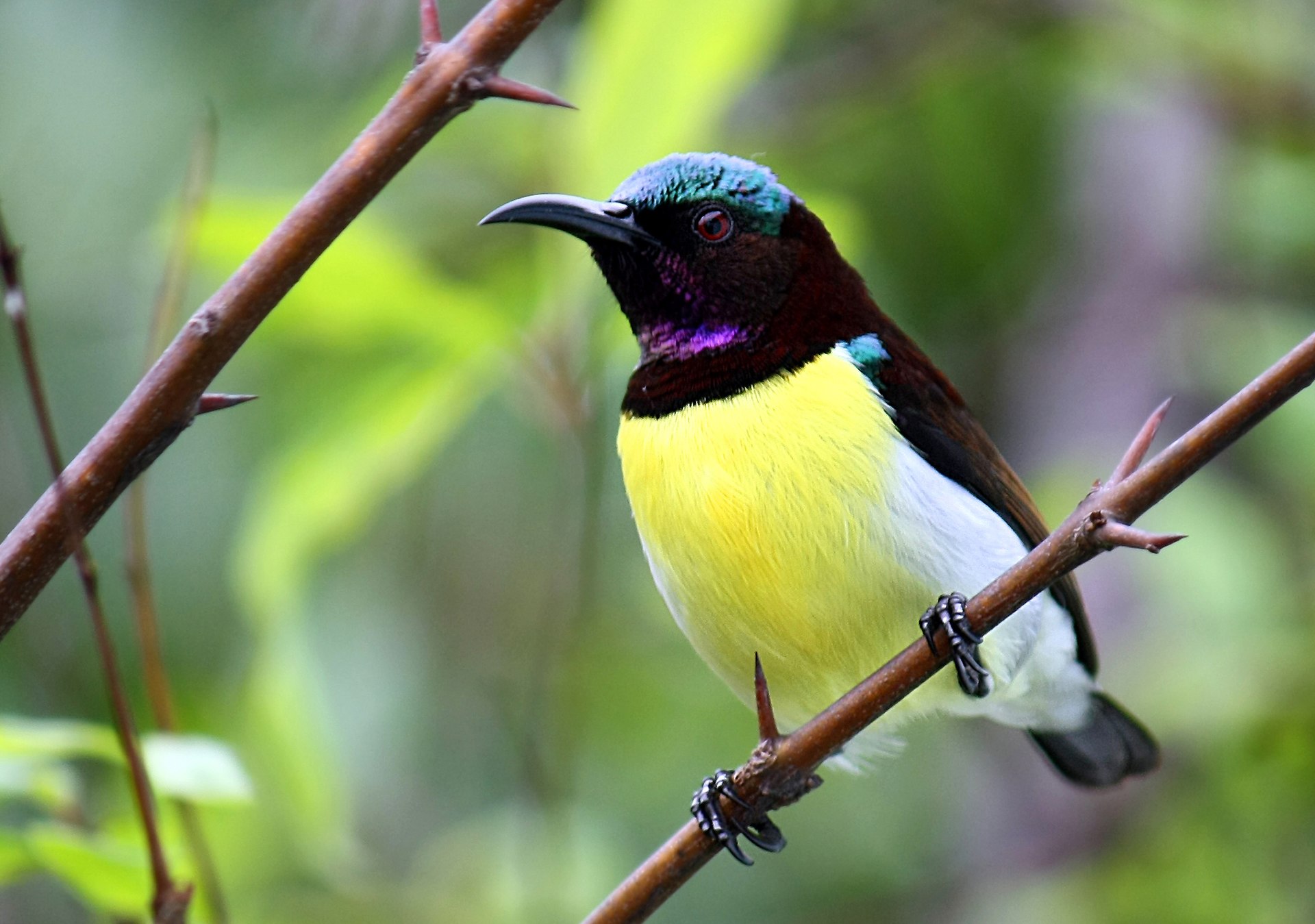India is home to more than 12% of the world’s avifauna. Ornithologists have discovered about 1400 bird species on the territory of the state, some of which are not found anywhere else. Local residents are no longer surprised by peacocks or flamingos walking around, but among tourists, birdwatching is a popular entertainment, which makes them happy and introduces them to the nature of this exotic country.
List of Birds of India
It is simply impossible to describe all the diversity of the local avifauna in a small survey. But it is also impossible not to mention the most striking examples:
- And the first of them, of course, are peacocks. These are the national birds of India and there are two reasons for this. The first is that peacocks belong to the pheasant family. Initially, they appeared in the Himalayan region, and only then spread throughout Asia, ending up in Tibet, China and so on. The second reason is that the peacock is an outstanding representative of the avifauna. Indians say that the bird’s colors are as diverse as India itself.
- The purple-rumped sunbird is a small, bright bird with an unusual down-curved beak, which it uses to extract nectar. In addition to its spectacular appearance, the bird has a beautiful and sonorous voice.

The purple-rumped sunbird - The Nilgiri pipit lives exclusively in India. Unlike other representatives of its family, it has a brighter color and stripes on the chest and on the sides. It does not migrate, which is why it can be seen in India all year round.
- The Manipur bush quail is a bird that lives in wet meadows and likes to hide in tall grass. The bird has a unique color: it is scarlet on the head, dark gray on the back and dirty yellow on the belly.
When studying the birds of India, you should also pay attention to the beach stone-curlew, the intermediate egret, the common tern, the spoonbill, the openbill stork, the white wagtail, the streptopelia, the asian barbet and the kingfisher.
Birds of Prey
The birds of prey of India deserve special attention, these include:
- white-rumped vultures;
- peregrine falcons;
- common kestrels;
- changeable hawk-eagles;
- Japanese sparrowhawks;
- western marsh harriers;
- brahminy kites;
- black kites;
- crested honey buzzards;
- ospreys.
And these are just a few of them. From this we can conclude that insects, fish and small animals should closely monitor the “airspace” of India, since a large number of various birds of prey are constantly circling in the sky, ready to attack them at any moment.



